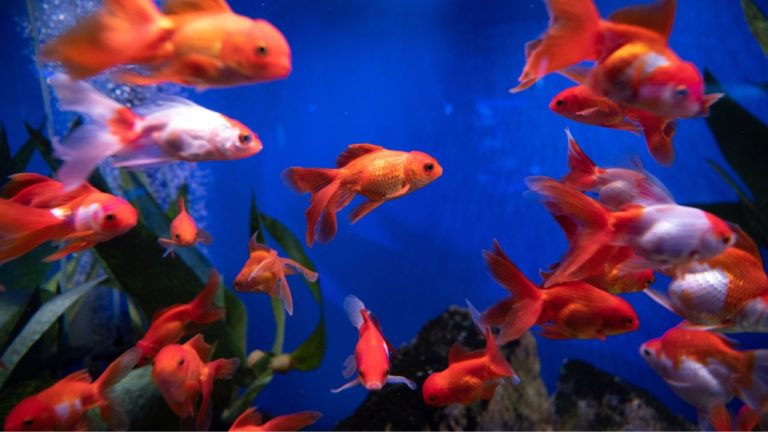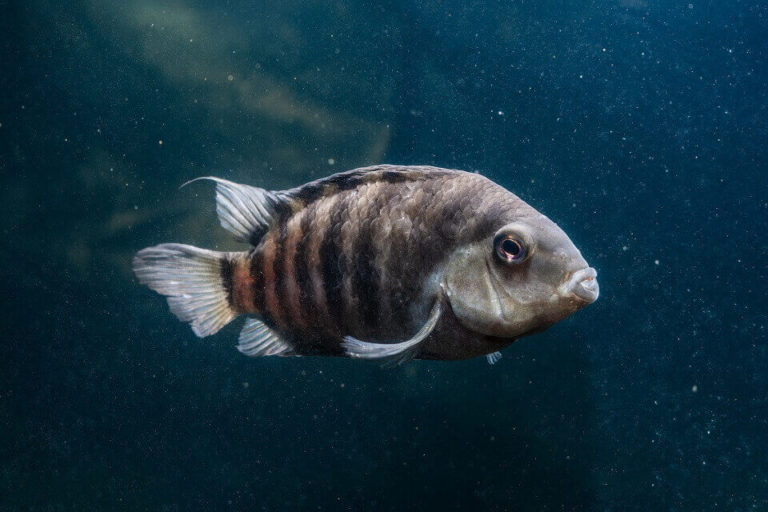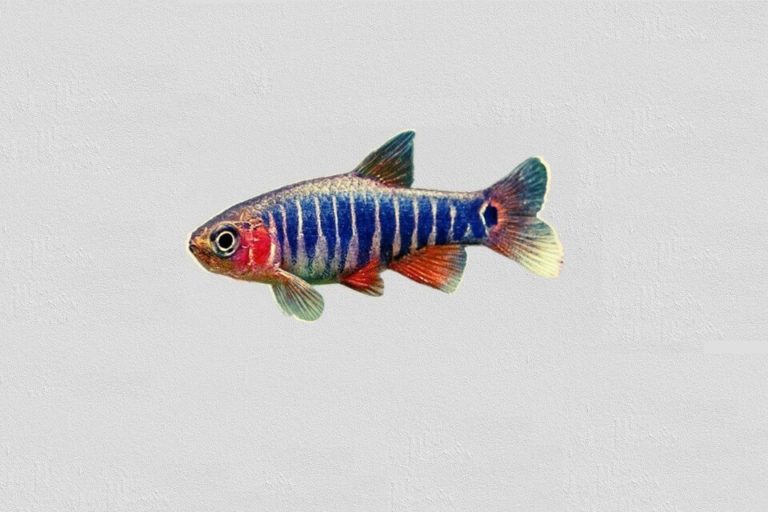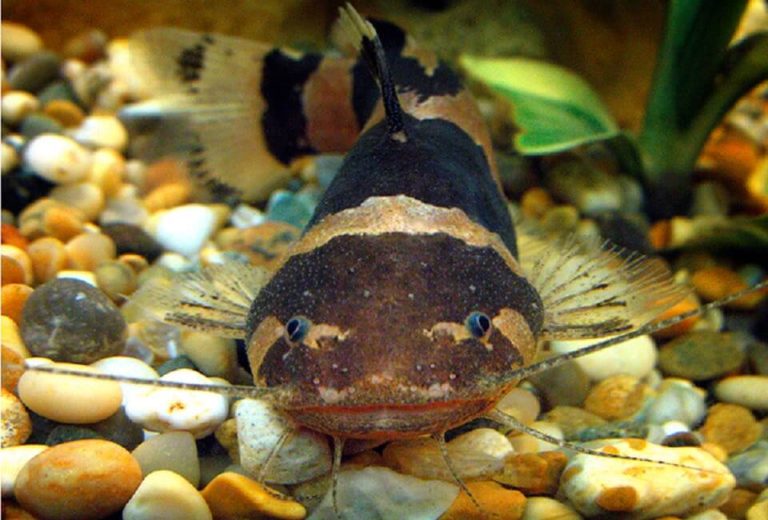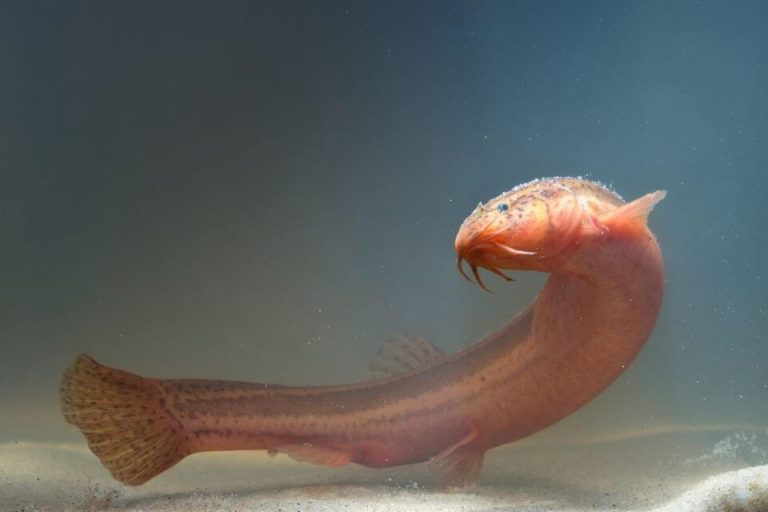Swordtail Fish Care Guide – Size, Lifespan, Food, Tank Mates & Tank Size
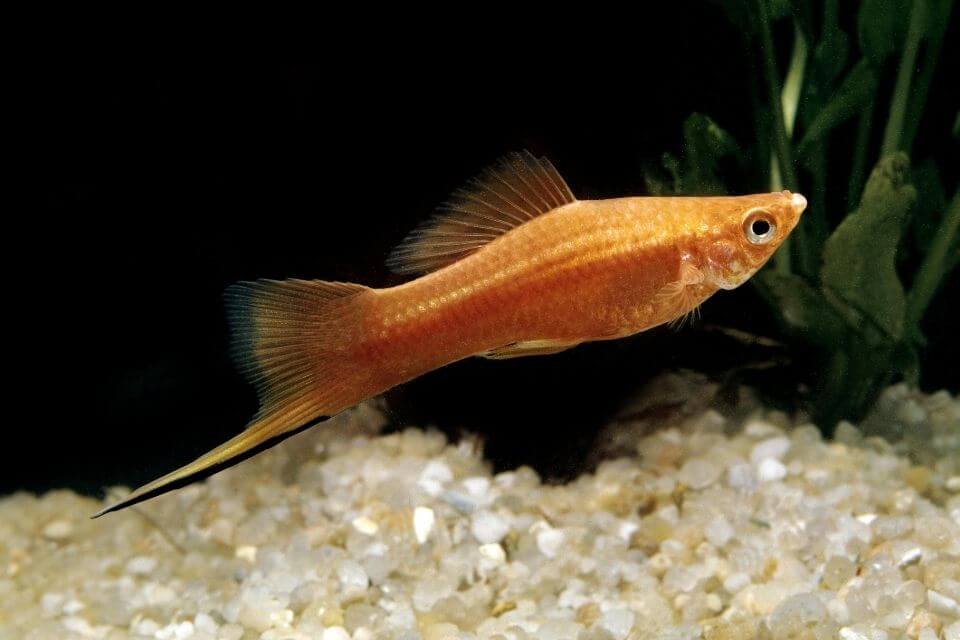
Swordtail Fish is one of the most prominent livebearer freshwater fish species that you can keep in captivity without any special care requirements.
Besides their resilience, they demand less in terms of care, making them manageable even for beginners.
Are you interested in keeping Swordtail fish?
Read on to expand your knowledge and learn how to maintain these aesthetic creatures. For aquarium enthusiasts, the article brings you a complete guide to all matters of Swordtail Fish care.
Species Overview
Swordtail Fish are scientifically known as “Xiphophorus helleri” is a famous freshwater species native to North and Central America. They are members of the Poeciliidae family, which includes common fish such as the Platy Fish and Guppy Fish.
Like others in the Poeciliidae family, these fish are prolific Livebearers who are more than ready to breed in confinement. Swordtail Fish are among the most popular in the aquarium trade because of less demanding care.
They are widely available in most pet stores and are popular among breeders. Thanks to their propensity for crossbreeding and simplicity of maintenance, many various shades and varieties exist.
When you combine it with their already unique appearance, you get a perfect species for spectacle.
Swordtail Fish Size
The Green Swordtail Fish is a bright species with a tiny body that is famous in aquariums. Swordtails Fish size usually are around 5.5 inches (14 cm) in average length.
Despite their lengthy tails, males are the smallest of the species. They rarely exceed the length, as mentioned earlier. Females, on the other hand, frequently develop an inch larger.
Swordtail Fish Lifespan
Swordtails are livebearers, which means that the process of giving birth can be highly exhausting on their little bodies. They become more sluggish as they age, and their colors appear duller, yet they do not just perish in old age.
They start to decline as they age, but typically a sickness or physical stress kills them. The usual Swordtail Fish lifespan is about 3 to 5 years old. If you maintain an optimal tank environment you would expect a long lifespan.
Swordtail Fish Appearance & Colors
Their caudal fin is the most discerning feature when you look at it. The name originates from the prolonged lower lobe pattern that surrounds the tail, resembling a sword.
However, the sword-like appearance is typical to males to allow sexual interaction with females.

There’s a lot of variety in terms of hue! Wild examples typically have an olive-green base with a brown lateral stripe that spans the length of the blade.
Crossbreeding, on the other hand, has provided aquarists with a plethora of distinctive aesthetic alternatives.
– Common Swordtail Fish
The Green Swordtail fish is the most common swordtail variety in North and Central America, Mexico, Honduras, and Africa. Helleri are olive green in color with red or brown streaks down the sides.
Their tails are medium to large in length, with extension in the bottom lobes, and are yellow with black borders. A fully gown Females Swordtail fish size is measured up to 6.5 inches and a mile fish is about 5.5 inches when.
– Neon Swordtail Fish
The Neon Swordtail fish is so named because of its bright neon blue coloring that runs the length of the fish.
They have a multicolor appearance, with neon blue, red, and orange colors blending to create an opalescent appearance amplified by multiple specimens swimming together.
The male Neon Swordtail fish has to flow feathery fins and a pronounced sword-like projection on the lowest section of the tail.
– Green Swordtail Fish
The Green Swordtail Fish is a freshwater species that belongs to the Poeciliidae family of the Cyprinodontiformes order. It is a closely related livebearer and can crossbreed with the Southern Platyfish or ‘Platy’ (Xiphophorus maculatus).
Its original range stretches from Veracruz, Mexico, to northwestern Honduras in North and Central America.
– Pineapple Swordtail Fish
The Pineapple Swordtail Fish is a one-of-a-kind Swordtail with dazzling yellow, red, and orange colors. Males have a long sword-like extension from the bottom of their tails.
Females, on the other hand, lack the sword, as with males. These species are adaptable to community tanks.
– Koi Swordtail Fish
The Koi Swordtail Fish is the most vibrant variant of these species. Koi Swordtail fish get their name from their resemblance to the famous selectively bred carp known as Koi (Nishikigoi).
Notably Koi variant has orange, red, and black colored patches over a milky white belly.
– Red Swordtail Fish
The Red Swordtail or Red Velvet Swordtail is the most popular variation of the popular Swordtail Fish. This variety has a stunning, deep red hue. The male’s fins are small and sleek, with a noticeable extension on the lower half of the tail.
On the other hand, the female lacks a distinctive sword-like tail, but her deep red coloring is equally stunning. Red Velvet Swordtails consume commercially prepared flakes diets, freeze-dried bloodworms, tubifex, brine shrimp, and algae.
They will reach a maximum size of 5.5 inches long and the tank and the water condition requirement is the same as other Swordtail Species.
– Red Wag Swordtail Fish
Red Wag Swordtail Fish is a fantastic starter fish for beginners. Red Wag Swordtail Fish (Xiphophorus hellerii) are docile communal fish that breed widely because of the demand in the aquarium trade.
Behavior & Temperament
This species is excellent for a community or home fish tanks. One of the explanations why Swordtail Fish are so easy to care for is that they are naturally quiet and kind.
During the day, they’ll socialize with other fish and explore the upper reaches of the surrounding water. While it is not aggressive, they prefer to be in the companionship of others.
These fish like to congregate in groups before wandering off on their own. That said, there is the possibility of some hostility. The only time it appears to be hostile is when numerous males are in the same aquarium.
Males can be territorial. Therefore it’s vital to keep a larger female-to-male ratio to ensure peace. They are active fish, so make sure there aren’t too many aesthetic objects in their style.
The best combination for Swordtail fish is to keep your decor and vegetation to the bottom half to 2/3 of your tank and leave the top of the tank open for vigorous swimming.
Swordtail Fish Care
Caring for Swordtails Fish is simple; the only issue you need to be sure of is the size of the tank. Although multiple swordtails can dwell in a 10-gallon aquarium, it is preferable if they have more room to move around.
– Swordtail Fish Tank Size
Swordtails thrive in a wide range of tank sizes and setups. We highly recommend a minimum of 10 gallons tank if you start with a single fish.
But it is don’t recommended to have a single fish, so start with 2 to 3 Swordtails in a 20 gallons tank to make them comfortable.
These docile fish are great for beginners and a colorful complement to any communal aquarium. Male Swordtails may establish territories and become aggressive toward other fish.
Please make sure you have plenty of space for all of your swordtails, no matter how small they are.
To provide your fish with greater space to spread around, you might add hiding spots utilizing imitation or live vegetation.

– Swordtail Fish Tank Setup
Because Swordtails rarely travel to the tank’s bottom, the substrate is not a significant concern. If you want to imitate their environment as nearly as possible, choose sandy substrates.
Rocks and bogwood add a natural feel to your tank while also creating helpful caves and fissures.
Plants are a vital feature since these fish need to escape when they are anxious. Distribute them evenly throughout the tank, but leave plenty of room for swimming.
There are a plethora of plants to pick from as below:
- Java Fern
- Anubias Nana
- Dwarf Hairgrass
- Jungle Val
- Amazon Sword
When introducing plants, acquire a covered tank lid since they are jumpers and will rise to the surface and attempt to jump out of the tank.
Swordtail Fish prefer the middle and upper layers of the home aquarium, so you won’t have to worry about the substrate. Dark-colored sand in the bottom of the tank, on the other hand, will perfectly replicate their natural habitat.
Besides the sand, you can add bigger chunks of rocks and bogwood to replicate their wildlife further. These also help them hide when they need some time to relax instead of being surrounded by their mates.
– Water Conditions
Even though these fish species aren’t picky about their tank layout, you should pay special attention to the water parameters. Swordtail Fish are tough tropical fish that can survive in a variety of water temperatures.
- Water Temperature: 70 – 82 °F(21 – 27 °C)
- Water Acidity: 7 – 8.5 pH
- Hardness: 12 – 30 dGH
Changes in these water parameters may create health issues, therefore regulate and maintain them. Although they live in flowing water, you don’t need to install a pump to circulate the water around your tank. The filter outflow should create enough current.
– Common Diseases and Prevention
Because most livebearers are resilient, they are not susceptible to disease. Nonetheless, they are also not immune. If you discover disease symptoms, separate the diseased fish in a quarantine tank to prevent the disease from spreading to the rest of your fish.
Ich (also known as white spot illness) is a frequent disease caused by an ectoparasite. It causes white patches on the body or fins. Increase the temperature to 82°F and add one teaspoon of salt for every 2 gallons of water to sterilize it.
Mouth fungus, sometimes known as cottonmouth, creates fluffy growths around the mouth and fins, another possible illness. Antibiotics from a pet store can be used to treat this.
Swordtail Fish Diet and Feeding
Swordtails are omnivores who like a varied diet. Depending on the temperature of their tank, you may need to feed your fish 2-3 times every day. The Swordtail will eat flakes and granules, but they will be entirely content if you give them live bait or larvae.
They require a lot of protein as juveniles. This means that live or frozen foods such as bloodworms, daphnia, and brine shrimp are crucial additions to a dry food diet.
Make sure that they get some vegetation (this will provide some fiber to ease their digestion). Algae Wafers are an excellent method to accomplish this, but you can also use some green vegetables that you may already have on hand.
When it comes to their feeding period, you must be especially cautious since they will eat everything you give them. Overfeeding, on the other hand, can have severe consequences for their health and way of life.
Difference Between Male Swordtail and Female Swordtail
Only male swordtails get the tail fin elongation. Females have a rounded tail fin. Females’ bodies are likewise more rounded, thicker, and roughly a half-inch longer when they reach maturity.
If you do not want your swordtails to breed, you must know their sex and isolate males from females. They can procreate as early as 12 weeks of age.
Origin and Distribution
These freshwater beauties are native to North and Central America. They belong to the Poeciliidae family, which also includes Platies and Guppy.
Despite their size, they are a popular addition to community tanks due to their beautiful look and social behavior. The majority of Swordtails Fish species originate from Belize, Guatemala, and Mexico.
They can be found practically in the water bodies that have moderate currents, such as mountain creeks, streams, and rivers in the lower sections of these countries.
The natural habitats have high oxygen concentrations and have an acidity range of 7.0 to 8.5 pH with water hardness ranging from 12 dGH to 30 dGH.
The water temperature appears to be the same in all of those areas, which is 75 to 79 degrees Fahrenheit.
Surprisingly, Swordtail Fish can thrive in almost every freshwater environment. They’ll adapt to any environment, whether it’s a shallow mountain creek or a colossal river.
Swordtails Fish may live even in salty marshes near the coastal areas.
Swordtail Fish Breeding
Swordtails are livebearers, which implies they give birth to live offspring after the eggs mature in the female’s body. Livebearer fish, similar to swordtails, could overpower a system.
Many newcomers are unaware of the Swordtail’s livebearing abilities and are astounded by a flock of swordtails.
When the males are ready, they will swim alongside the females, sometimes pecking them. Because this can upset the females, there should be more females in the tank than males.
Swordtails can develop as early as three months old and produce up to 50 fries every spawning. It is critical to segregate men and women before they reach reproductive maturity.
Swordtail Fish Tank Mates
Swordtail Fish get on well with most other species. They are calm and docile. Begin by adding other Swordtail Fish to your communal aquarium.
It would help if you never left these fish lonely. A small group for interaction can do a great deal of good.
In terms of tank mates, you have a variety of possibilities aside from the same species. Stick to fish that are comparable in size and behavior. Avoid fish that are aggressive or territorial.
These fish species are unable to defend themselves against predators. They become cautious and hesitant in the company of more hyperactive fish.
Viable counterparts include:
- Molly fish
- Neon Tetras
- Platy Fish
- Dwarf Gourami
- Rosy Barb
- Cory Catfish
- Zebra Danio
- Galaxy Rasbora
- Sparkling Gourami
Frequently Asked Questions
We hope you might find all the useful information for caring for Swordtail Fish so far. Further, the below discussed questions might help to make you more confident.
How Many Swordtails Should Be Kept Together?
When you first start housing Swordtail Fish species in your tank, start with 2 to 3 in a 20 gallons tank and gradually expand the number when you buy a larger tank.
Female Swordfish can conceive and give birth every 28 days if kept in the proper living conditions.
Also, if you plan on breeding them, attempt to move the adult fishes to a different breeding tank to maintain the proper temperature and water parameters for practical breeding.
Is Swordtail Fish Aggressive?
Swordtail Fish maintenance is simple since they get along well with other tankmates. They are ideal for more extensive community tanks, as long as you maintain their water conditions and eating habits.
The Swordtail Fish is a quiet and amiable fish that will get along well with other tankmates. Although they are not necessary shoaling species, they should be kept in groups of 5 to 6 to make them feel at ease in the tank.
Also, keep the female-to-male ratio at a higher level. Male Swordtail Fish can be territorial, so don’t keep too many in the same tank. Restrict the number of males to 2 to 3 and double that number with females to coexist.
How Big Can A Swordtail Fish Get?
Male Swordtail Fish can grow up to 5.5 inches long. Females can grow up to 6.5 inches in length under optimal care.
Will Swordtails Eat My Shrimp?
Swordtail Fish are tolerant to a wide range of meals. Because they will eat almost anything, you can feed them quality flake food or live meals such as bloodworms, daphnia, brine shrimp, larvae, or fruit flies.
Do Swordtails Eat Their Babies?
Like all other livebearers, Swordtails lack maternal instincts and, as a result, swallow their young shortly after birth. Hunger is another reason why female swordtails consume their young.
They might not touch the babies if you feed them the right food.
How Much A Swordtail Fish Cost?
Swordtail Fish prices vary according to species. Prices are available online and vary among vendors. It is best to conduct some groundwork to realize the best deal.
Check customer reviews and ask friends and experts for more information.
Time to Take a Decision
By following the tips above, you can be sure to have an easy time housing your swordfish till their maximum lifespan. Refer to the article above to receive all the help you need.
It is a no-brainer that Swordtail Fish care can be worthwhile. These freshwater beings can add prestige and are a joy to own.
Furthermore, they cause little trouble, making them excellent choices for your pleasure. Should you be contemplating rearing swordtails, this guide will help you in making fishes thrive.



